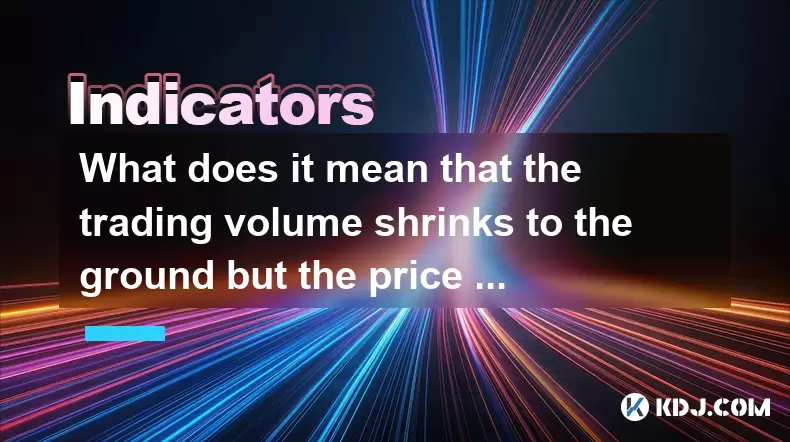-
 Bitcoin
Bitcoin $109,507.9823
0.43% -
 Ethereum
Ethereum $2,716.0274
3.79% -
 Tether USDt
Tether USDt $1.0003
-0.01% -
 XRP
XRP $2.3859
3.05% -
 BNB
BNB $665.2705
0.56% -
 Solana
Solana $154.6874
1.56% -
 USDC
USDC $1.0002
0.02% -
 TRON
TRON $0.2896
1.05% -
 Dogecoin
Dogecoin $0.1738
1.67% -
 Cardano
Cardano $0.6117
3.72% -
 Hyperliquid
Hyperliquid $40.3052
3.82% -
 Sui
Sui $2.9817
2.08% -
 Bitcoin Cash
Bitcoin Cash $505.0944
0.71% -
 Chainlink
Chainlink $14.0820
1.96% -
 Stellar
Stellar $0.2902
12.90% -
 UNUS SED LEO
UNUS SED LEO $9.0423
-0.34% -
 Avalanche
Avalanche $18.7084
1.54% -
 Hedera
Hedera $0.1714
6.33% -
 Shiba Inu
Shiba Inu $0.0...01218
2.48% -
 Toncoin
Toncoin $2.8261
1.24% -
 Litecoin
Litecoin $88.8228
1.59% -
 Monero
Monero $319.1344
2.71% -
 Polkadot
Polkadot $3.5479
2.69% -
 Dai
Dai $1.0001
0.00% -
 Ethena USDe
Ethena USDe $1.0010
0.06% -
 Uniswap
Uniswap $8.2690
6.49% -
 Bitget Token
Bitget Token $4.3622
1.19% -
 Aave
Aave $298.5989
2.11% -
 Pepe
Pepe $0.0...01042
1.97% -
 Pi
Pi $0.4663
1.15%
What does it mean that the trading volume shrinks to the ground but the price refuses to fall?
"Shrinking trading volume with stable prices often signals market indecision, especially in crypto, where low activity can hint at accumulation or reduced sell pressure."
Jun 29, 2025 at 02:56 pm

Understanding the Concept of Shrinking Trading Volume
When traders and analysts refer to trading volume "shrinking to the ground," they are describing a situation where the number of transactions or the total amount of assets being traded drops significantly. This is often visualized on candlestick charts, where the volume bars beneath each price bar become increasingly smaller over time. A sharp decline in volume suggests reduced market participation, which can indicate either a lack of interest or uncertainty among traders regarding the asset’s future direction.
In cryptocurrency markets, this phenomenon is especially notable due to their volatile nature. Cryptocurrencies like Bitcoin, Ethereum, and altcoins experience rapid price swings driven by news, regulatory changes, or macroeconomic factors. Therefore, when volume dries up but prices remain stable or even rise, it raises questions about what's happening behind the scenes.
Important Note: A shrinking volume doesn't necessarily mean that the trend will reverse immediately, but it does signal a potential shift in market sentiment.
Why Price Refuses to Fall Despite Low Volume
The phrase “price refuses to fall” implies that despite low buying and selling pressure, the price remains resilient. This might seem counterintuitive at first glance. In traditional financial theory, lower volume usually correlates with weaker price action. However, in crypto markets, several unique dynamics may explain this behavior.
One possible explanation is a strong support level being defended by institutional or large retail buyers. These entities might be accumulating positions quietly without triggering panic or aggressive selling. Another factor could be the presence of automated trading bots that maintain liquidity within a tight price range.
Additionally, some coins or tokens might be held long-term by HODLers who are not reacting to short-term volatility. As a result, even if there's little trading activity, the supply available for sale is minimal, preventing downward movement.
Key Insight: When sell orders are sparse and demand, although modest, matches or exceeds supply, the price can stabilize or even climb slightly.
Analyzing On-Chain Data for Clues
To better understand why price remains firm despite low volume, one must look beyond just the exchange data and delve into on-chain analytics tools. Platforms such as Glassnode, Santiment, and IntoTheBlock offer insights into wallet movements, exchange inflows/outflows, and holder behavior.
For example, if a coin is seeing fewer transfers to exchanges while more coins are moving to cold storage, it indicates that holders are less likely to sell. Similarly, metrics like “Exchange Netflow” show whether coins are flowing into or out of exchanges. A negative net flow means more coins are being withdrawn, reducing sell pressure.
Another useful metric is “Holder Position Changes”, which tracks whether large holders (whales) are increasing or decreasing their stakes. If whales are accumulating during low-volume periods, it can act as a floor for prices.
Technical Tip: Use platforms like Glassnode Studio to compare real-time volume against on-chain supply distribution metrics for deeper insights.
How Market Depth Influences Price Stability
Market depth refers to the number of buy and sell orders at various price levels. During low-volume conditions, the order book might appear thin, yet certain coins still show resistance to downward movement. This can happen if large limit buy orders are placed just below the current market price, creating an artificial support zone.
These orders might come from institutional players or experienced traders who aim to accumulate at specific price points. Even if actual trades aren’t executed, the mere presence of these orders can deter sellers from pushing the price lower.
Moreover, some decentralized exchanges (DEXs) use automated market makers (AMMs), where liquidity pools ensure constant availability of trade pairs. Although trading volume might be low, liquidity providers earn fees regardless of volume, so they don’t remove their funds unless slippage becomes too high.
Practical Observation: Check the order book on centralized exchanges and DEXs to assess how much support exists near the current price.
Psychological Factors Behind Price Resilience
Human psychology plays a significant role in crypto markets. Traders and investors react emotionally to both gains and losses. When volume drops but prices hold, it may reflect a psychological equilibrium between fear and greed.
If a coin recently experienced a sharp rally followed by consolidation, many holders might believe the worst is over. This belief leads to reluctance to sell, even when there isn’t enough new money coming in to push the price higher.
Conversely, short-sellers or bears might be hesitant to initiate new positions because of recent volatility. The fear of getting caught in a sudden pump—especially after a prolonged downtrend—can lead to cautious behavior, further stabilizing the price.
Critical Understanding: Market psychology can override technical indicators, especially in illiquid or speculative environments like crypto.
Frequently Asked Questions
- Does low volume always precede a breakout?
No, low volume doesn’t guarantee a breakout. It simply signals indecision. Breakouts typically occur when volume surges again, confirming a new trend. - Can I trust price action during extremely low volume?
Extreme caution is advised. Prices during low volume can be manipulated easily by large players. Always wait for confirmation through increased volume before making decisions. - What should I do if my investment shows shrinking volume but stable price?
Review your original thesis for holding the asset. If fundamentals haven’t changed and on-chain data supports accumulation, patience may be warranted. Consider setting alerts for volume spikes. - Are certain cryptocurrencies more prone to this pattern?
Yes. Smaller-cap coins with limited liquidity often exhibit this behavior. Large-cap assets like Bitcoin and Ethereum tend to have more consistent volume, though even they can experience quiet phases.
Disclaimer:info@kdj.com
The information provided is not trading advice. kdj.com does not assume any responsibility for any investments made based on the information provided in this article. Cryptocurrencies are highly volatile and it is highly recommended that you invest with caution after thorough research!
If you believe that the content used on this website infringes your copyright, please contact us immediately (info@kdj.com) and we will delete it promptly.
- Pi Network: Powering the Global Economy and the Future with AI
- 2025-07-10 12:50:12
- Crypto Hack: GMX Bounty Offered After $42M Drain
- 2025-07-10 12:50:12
- Crypto Liquidations and Bitcoin's Wild Ride: What's Next?
- 2025-07-10 12:30:12
- Bitcoin Blasts to All-Time High: Is Institutional Momentum the Real Deal?
- 2025-07-10 13:10:12
- Bitcoin's Wild Ride: Record Highs and Price Surges Explained
- 2025-07-10 13:10:12
- Cloud Mining in 2025: Top Platforms for Passive Bitcoin & Altcoin Earnings
- 2025-07-10 13:15:11
Related knowledge

How to trade Dogecoin based on funding rates and open interest
Jul 07,2025 at 02:49am
<h3>Understanding Funding Rates in Dogecoin Trading</h3><p>Funding rates are periodic payments made to either long or short traders ...

What is the 'God Mode' indicator for Dogecoin
Jul 07,2025 at 04:42pm
<h3>Understanding the 'God Mode' Indicator</h3><p>The 'God Mode' indicator is a term that has emerged within cryptocurrency trading ...

Using Gann Fans on the Dogecoin price chart
Jul 07,2025 at 09:43pm
<h3>Understanding Gann Fans and Their Relevance in Cryptocurrency Trading</h3><p>Gann Fans are a technical analysis tool developed b...

How to spot manipulation on the Dogecoin chart
Jul 06,2025 at 12:35pm
<h3>Understanding the Basics of Chart Manipulation</h3><p>Chart manipulation in the cryptocurrency space, particularly with Dogecoin...

Dogecoin market structure break explained
Jul 07,2025 at 02:51am
<h3>Understanding the Dogecoin Market Structure</h3><p>Dogecoin, initially created as a meme-based cryptocurrency, has evolved into ...

How to backtest a Dogecoin moving average strategy
Jul 08,2025 at 04:50am
<h3>What is a Moving Average Strategy in Cryptocurrency Trading?</h3><p>A moving average strategy is one of the most commonly used t...

How to trade Dogecoin based on funding rates and open interest
Jul 07,2025 at 02:49am
<h3>Understanding Funding Rates in Dogecoin Trading</h3><p>Funding rates are periodic payments made to either long or short traders ...

What is the 'God Mode' indicator for Dogecoin
Jul 07,2025 at 04:42pm
<h3>Understanding the 'God Mode' Indicator</h3><p>The 'God Mode' indicator is a term that has emerged within cryptocurrency trading ...

Using Gann Fans on the Dogecoin price chart
Jul 07,2025 at 09:43pm
<h3>Understanding Gann Fans and Their Relevance in Cryptocurrency Trading</h3><p>Gann Fans are a technical analysis tool developed b...

How to spot manipulation on the Dogecoin chart
Jul 06,2025 at 12:35pm
<h3>Understanding the Basics of Chart Manipulation</h3><p>Chart manipulation in the cryptocurrency space, particularly with Dogecoin...

Dogecoin market structure break explained
Jul 07,2025 at 02:51am
<h3>Understanding the Dogecoin Market Structure</h3><p>Dogecoin, initially created as a meme-based cryptocurrency, has evolved into ...

How to backtest a Dogecoin moving average strategy
Jul 08,2025 at 04:50am
<h3>What is a Moving Average Strategy in Cryptocurrency Trading?</h3><p>A moving average strategy is one of the most commonly used t...
See all articles

























































































